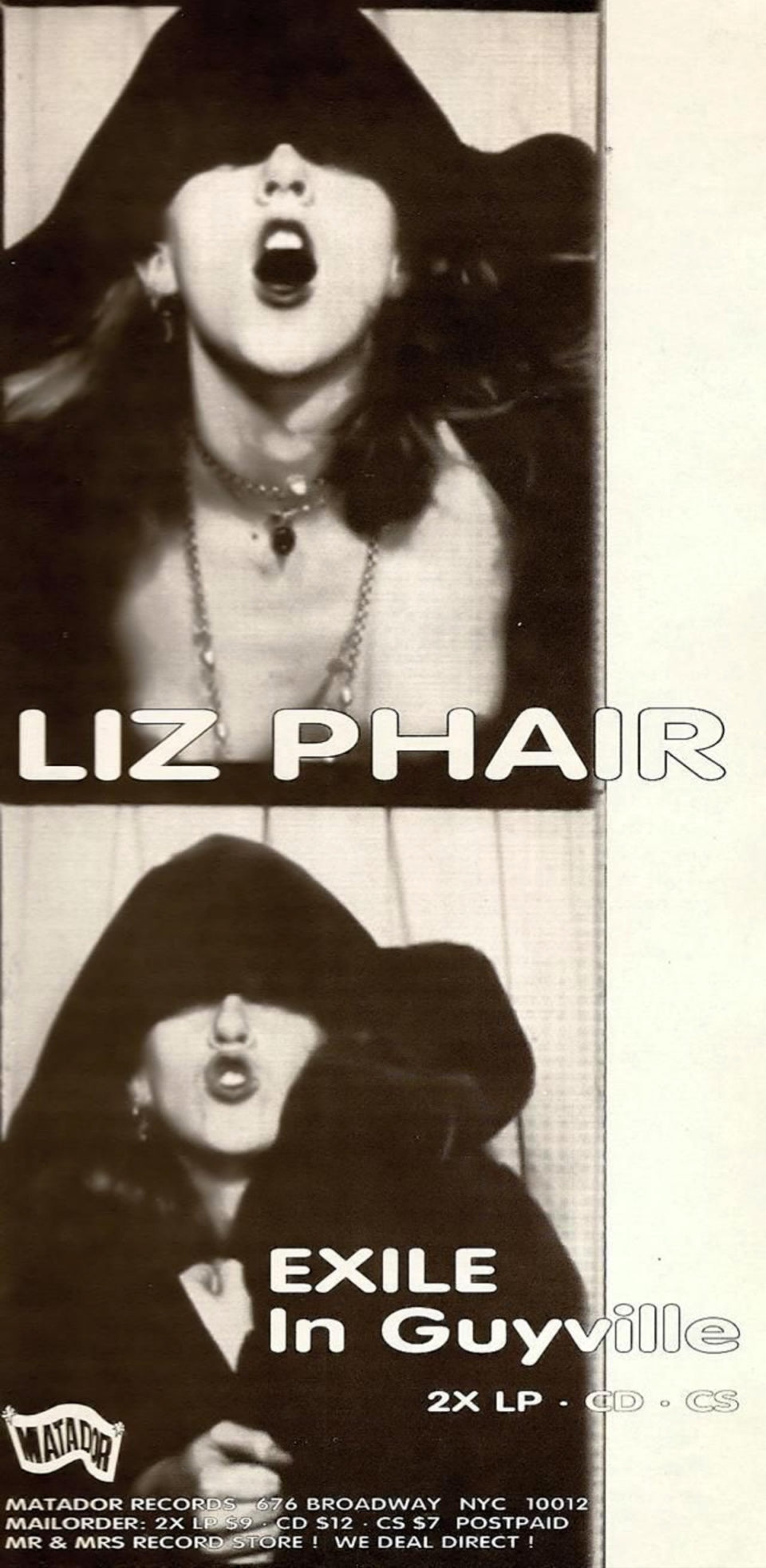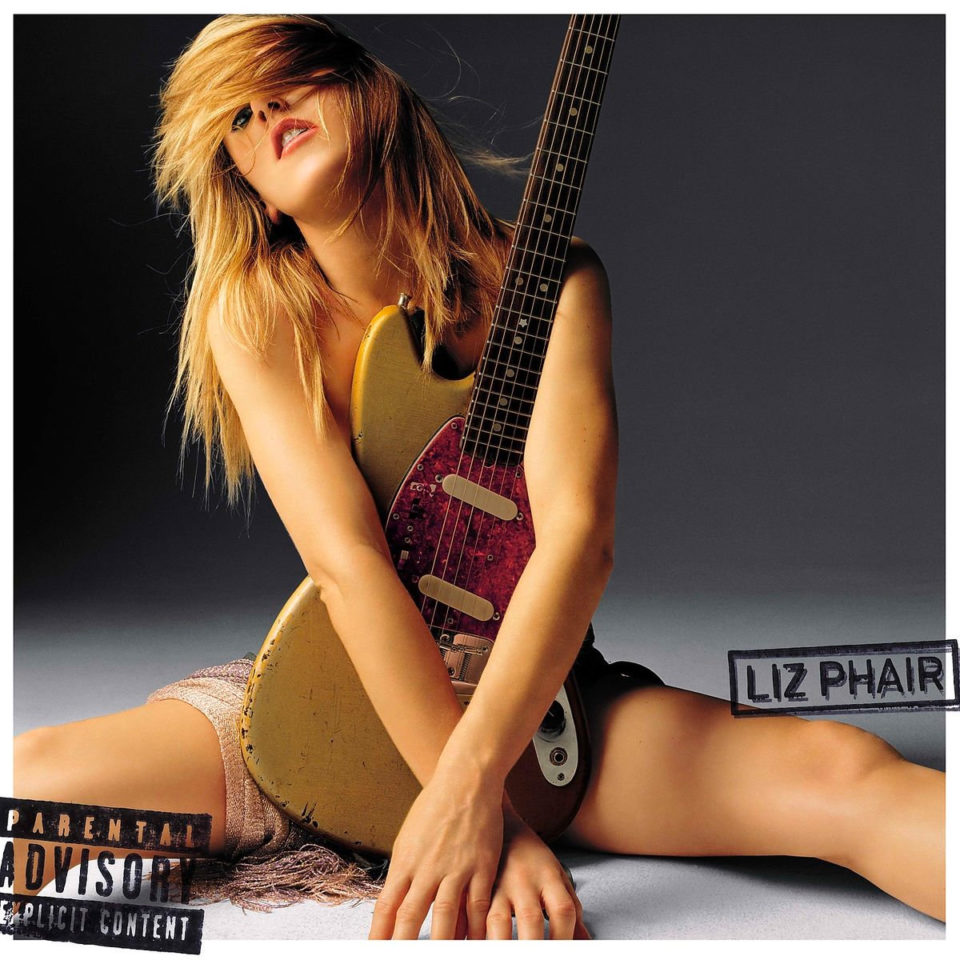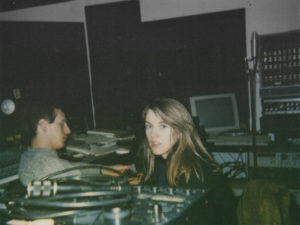By Kara Tucker
Rock & Roll Globe, June 22, 2023
Liz Phair’s classic debut, Exile in Guyville, turns 30 today, an album older than its creator was when she made it.
It’s an album that’s held up for its songwriting and honest, smart point of view, which have allowed it to age very well ever since.
It also requires a bit of unpacking all these years later.
First of all, it’s not a complete song-by-song response to the Rolling Stones’ 1972 classic Exile on Main St., at least not in readily apparent ways.
Sure, the idea was a jumping-off point and inspiration, but does that hold up track-by-track? Absolutely not. There’s no way that sexuality-owning “Flower” acts as a counter to the pain in the gospel blues of “Let It Loose”, for example.
Rather, the Stones were avatars of a sort, representing the tight, front-bulging pants-wearing classic rock patriarchy and that dude in the corner without their talent or swagger, but with plenty of unsolicited opinions about what women could or should do.
Over half of the songs predated Exile in Guyvile entirely, as heard on the Girly-Sound tapes, which were additionally bootlegged before getting an official release years later. Phair had a head start on her planned double album.
In the early ’90s, Phair, who’d studied art at Oberlin College, returned to suburban Chicago to live with her parents. She wrote and recorded those early songs on a four-track in the bedroom she grew up in, solely for herself. She’d sent out tapes to a couple of friends, but those friends dubbed out copies and, eventually, songs from them wound up in the hands of Gerald Cosloy at Matador.
Phair signed with the label, which raised eyebrows among certain rock bros in Chicago. Here was someone who hadn’t spent years gigging in clubs and who, by her own admission, was probably focused more on trying to find a career in art instead of music. But she had a record deal.
Guyville itself was a name for the Chicago music scene at the time, coined by one of the guys from Urge Overkill. This was full of bands fronted by and centering men, with all that entails.
The fact is that a lot of those bands were never going to cross over. Sure, by that point, Billy Corgan’s marriage of classic rock with Gen X angst was about to become huge. But the likes of Shellac and Tortoise were never going to go mainstream. Jesus Lizard would actually release two albums on a major label in the latter half of the ’90s, but were too intense to cross over or even have a fluke hit as the Butthole Surfers did. Urge Overkill themselves had a great shot with their mix of songs and attitude, but eventually couldn’t get out of their own way with how they were living offstage.
So, no, this wasn’t some little outsider stealing opportunities here. Nor was there, it should be noted, unanimous eyebrow raising. Phair had friends in the scene and, besides, the potential there in the Girly-Sound tapes was evident.
Work on the album began before she had a deal. She started spending time with John Henderson, who owned a small label called Feel Good All Over, putting songs together at his home. Henderson thought Brad Wood’s Idful Studios would be a good place to record and invited Wood over to listen to a copy of Girly-Sound.
“My first impression was, ‘Holy shit, I’ve got to find a way to record this music,’” Wood told SPIN in 2013. “I just remember the long walk home from John’s apartment, feeling kinda drunk with the possibilities. I also remember worrying that I couldn’t afford to screw this up.”
Even if Phair wasn’t 100 percent sure about music as a career, she wasn’t going to half-ass it or cede control. Phair eventually parted ways with Henderson over the album’s direction, feeling he was acting like self-appointed captain of the ship. With money from Matador, she and Wood moved forward from there.
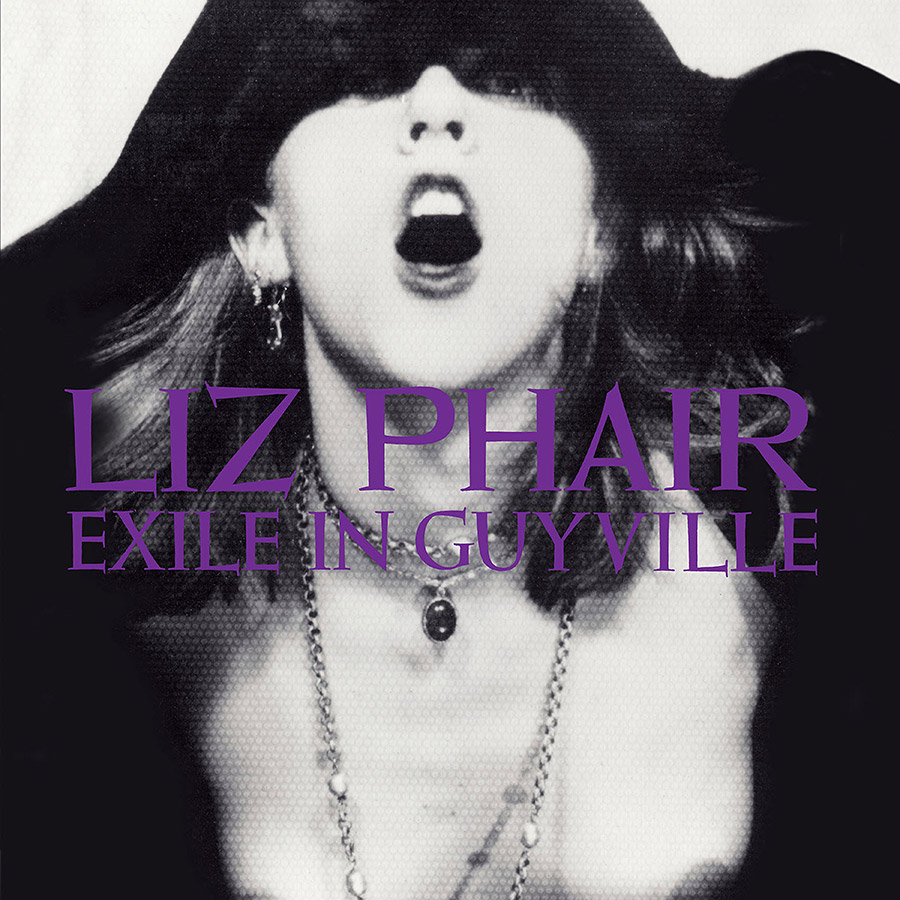
Putting the album together over parts of two years was not a hurried process, nor overly stressful. Phair later recalled that there weren’t a lot of major arguments at that stage.
By the time it was finished, Wood (who also played bass and drums) and guitarist Casey Rice (who also worked at Idful) knew they had something. So did the guys from Matador. And Phair? She definitely knew.
“I can remember listening to [Guyville] in my apartment and thinking it sounded amazing,” she told SPIN. “I was so proud and felt a rush of power because I had done something I knew was good. Listening back at my parents’ house, privately, feeling terrified that my two worlds would collide and it was not going to be pretty. I had kept them separate. It would blow my cover.”
While the connections to the Stones became more threadbare over the course of the album, they were there on its opening tracks.
If Jagger was hip-deep in preening decadence on “Rocks Off”, Phair gives agency to the woman in the song, someone unimpressed with his bullshit. (“And I kept standing six-feet-one/Instead of five-feet-two/And I loved my life/And I hated you”). Much was made of the frankness Phair employed when it came to sexual matters, even if some missed the point.
Her deadpan voice is perfect for “Fuck and Run”, in which she sounds weary and older than 26. She wants more than just the one night stand she’s just woken up from, singing she wants romance, or “all that stupid bullshit like letters and sodas”. And the final line, seemingly tossed off, reveals the painful root of that weariness — “Fuck and run/Even when I was twelve.”
Perhaps it could have been called “Fuck and Stay”, given how unreservedly unchaste she is in “Flower.”
She’s in full control, blunt throughout, demanding full penetration and boasting that they’re going to keep doing it until his “dick turns blue”. The Girly-Sound version’s lyric of “I’ll fuck you and your girlfriend, too” was changed to the softened and, in light of a number of animated films since 2010, unintentionally funny “I’ll fuck you and your minions, too”.
But this isn’t all dirty talk.
The driving “Never Said” is about being in a music scene veering into just being high school with guitars, with all the attendant gossip and drama. It’s a reminder that while a bunch of zoned-out Brits in a French mansion may have been the starting point, some of its inspirations were closer to North Avenue than Nellcôte.
The raucous Stones rocker “Rip This Joint” begat “Help Me Mary”, in which Phair puts you there with her in the room when local rock dudes get together and the only women there are either, as she put it to Rolling Stone years later– girlfriends or den mothers.
Exile is very much a capsule in time. Wicker Park, the neighborhood she moved around in, would soon become increasingly gentrified. The modern equivalent of Phair (even as admittedly privileged as her upbringing was) or Guyville’s more phallocentric denizens likely couldn’t afford to live there now.
At the same time, especially with the improvement in home recording, the album with its approach has resonated beyond the circumstances in its creation. One can hear it as part of the DNA in all sorts of acts: Frankie Cosmos, Snail Mail, Speedy Ortiz, Soccer Mommy, Courtney Barnett and more.
The production might be lo-fi, but calling it low-key is more fitting. It’s not like Phair sounded like early Guided By Voices, who sounded like they’d come from tapes that sat unprotected in a cave for years and had to have the bat guano scraped off.
Over its 18 songs, that production on Exile in Guyville in service of a split between full-band rock and songs where the instrumentation is stripped back — to just guitar or piano, maybe with percussion.
Among the stripped back songs, “Dance of the Seven Veils” casts Phair as Salome with knowingly false bravado. “Explain It To Me” empathetically looks at a big rock star in a career downturn (perhaps a subconscious fear of the outcome of her own dreams of stardom). “Canary” is about being at that point being on the cusp of womanhood, one foot on the adult side, one still a child, somehow not on the soundtrack to Lady Bird almost a quarter-century later.
Both feet are planted in adulthood on “Shatter”, in which background feedback gives omnipresent atmosphere as Phair ponders the possibilities with someone who isn’t just a fuck-and-runner.
“Divorce Song” is a standout among the more fleshed-out side, immersed in everyday detail in its depiction of the relationship’s end.
“Stratford-on-Guy” is also in you-are-there territory, in seat 27-D, miles above the ground with whatever scene drama or relationship angst left below.
If “Divorce Song” carries a degree of resignation, the emotions are rawer on “Johnny Sunshine”, as it dissolves from crunchy guitars to just her cooing voice over ever-quieter strums.
If there are battles with the scene, with a relationship or with herself, by “Strange Loop”, things have ended in a draw. The reconciliations of the lyrics are played off with the outro of the instruments going off the rails and collapsing in a tasteful heap.
Much was deservedly made of the album’s feminism. It was disarming in its honesty. Sure, she loved the sex (and clearly wouldn’t abide being slut shamed), but she also appreciated and wanted something deeper. She could cleverly skewer the boys club, but she wasn’t going to be anyone’s Miss Perfect (see the self-mocking, echoing vocal part on “Girls! Girls! Girls!”).
This was an album for herself and the young women she wanted to reach, free of any pushback from label suits. This could have read like a feminist tract, but Phair was too real, smart and sly for that.
As inspirational as Exile in Guyville became for its viewpoint, Phair’s songwriting shouldn’t get lost in the shuffle. She had a knack for making a lot of the songs stick, with even the ones without obvious hooks remaining absorbing.
The album was greeted with its fair share of rapturous praise upon its release, making a lot of year-end lists. Much of if it recognized the album for what it was, sprinkled with a few skeevier types who just liked it because they thought Phair fit some still-pliant “chick who can hang” stereotype.
There was also some jealous brotastic sniping, as if there were signs posted throughout Chicago with all of the rules and this 26-year-old from the suburbs had flipped off those signs and jumped to the front of the line.
For an album brimming with confidence, the reception in those particular quarters led to self-doubt for Phair. It didn’t help that she was battling stage fright in those days. She still does, but back then it was paired with her inexperience as a live performer. It was a tough combination when unwanted self-doubt entered the picture.
Phair made two more albums for Matador — 1994’s Whip-Smart and 1998’s Whitechocolatespaceegg. Both were quite solid, containing individual songs that matched what appeared on Guyville.
Neither captured the zeitgeist the same way. They couldn’t. One can only make one audacious debut, after all.
The label’s rejection of the initial version of Whitechocolatespaceegg, because it wanted something more radio-friendly, would become ironic soon enough.
Even though this was when Lilith Fair still existed, the alternative radio market was shifting. The more aggro nu metal was taking off and getting ready to, in some cases, age poorly. And as for Top 40, there were the shifts that would come to dominate those charts in the streaming era to the exclusion of almost everything else — hip-hop and teen-oriented pop.
Phair had dutifully done the expected, playing Lilith Fair, then opening for Alanis Morissette in 1999. But she hadn’t crossed over, with the album’s sales being lowest of the three. Now a parent in her 30s, she wanted more security financially. Much of what was then big wasn’t really an option. Adding raps and street beats wouldn’t fit at all. And her singing style was the furthest from the screaming required for a Guyville-style riposte to the Woodstock ’99 crowd, even though it would have been impossible to sound for her to sound any more ridiculous than Fred Durst did bleating lines like “I’m like a chainsaw/I’ll skin your ass raw” (underscoring Florida Man Durst’s lack of knowledge about how chainsaws actually work).
That left pop. And Phair gladly took that fork in the road, even bringing in an outside songwriting team — the Matrix, who had worked with the likes of Christina Aguilera, Jason Mraz and, most successfully at that point, Avril Lavigne (credit or blame them for “Sk8er Boi” and “Complicated”, depending on how often those choruses were in your head).
The final result was a self-titled album where the blatant desire for a bigger audience was palpable with the more polished production and the Matrix songs being attempts at pop success (“Why Can’t I” would be her only Top 40 hit). It was savaged in a lot of circles for its careerist ambitions at the time. In retrospect, it’s a perfectly fine album, if not a lost classic as revisionist historians would like to claim. In fact, Michael Penn produced more songs on it than the Matrix folks did, so this wasn’t a full-on immersion into Britney, or more recently, Carly Rae territory. In any case, it’s held up better than 2005’s Somebody’s Miracle.
Other ’90s musicians made the switch to becoming songwriters and producers for others. Semisonic’s Dan Wilson and Geggy Tah’s Greg Kurstin both moved successfully in that arena. That was never in the cards for Phair,who told The Guardian in 2018, “I think I’m too weird. I think my songs aren’t straight enough.”
Phair spent more time out of the spotlight after Somebody’s Miracle, doing additional work as a composer for television as well as focusing on raising her son.
There was only one album over the next 15 years. An intended double album, working with Ryan Adams fell apart because, well, it was Ryan Adams.
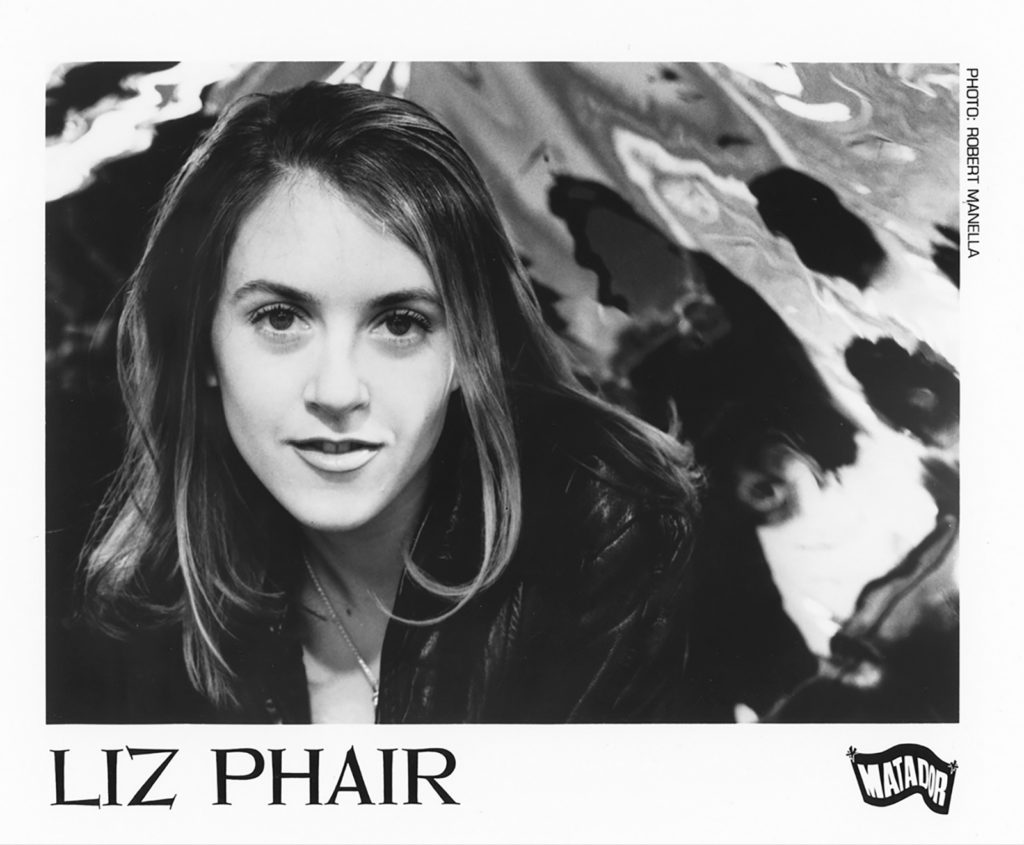
Phair, who encountered her share of MeToo moments in her career, later said of the experience on Twitter, after abuse allegations against Adams came out, “My experience was nowhere near as personally involving, but yes the record ended and the similarities are upsetting.”
When Soberish arrived in 2021, fans were greeted with Phair’s best album since the ’90s. Never lacking in self-assurance on record (you can take the girl out of Oberlin, but…), she seemed engagingly comfortable with being at a point where she didn’t have to chase the “shitloads of money” she sang about on Whitechocolatespaceegg. While the production wasn’t lo-fi, the song selection hearkened back to those less clean days. And there was an apparent joy at creating something good for its own sake again.
But no matter what other music Phair makes, it all goes back to Exile in Guyville. It was the sound of her creativity taking flight, in an environment where she didn’t have to care about any outside distractions. It was a template for herself and plenty of others who came after.
“Guyville is wrapped up in how the songs were written and in the way it was created and came about,” Phair told Spin. “It’s that girl, that girl having people say you can’t do this, you aren’t good enough to do this, you don’t know what you are doing — and me getting enough rage in me to say, “I have as much of a voice as anyone and I have as much of an education as anyone and even if I didn’t have the education or the musical knowledge — it didn’t stop me.”
Thirty years on, the resonant and ever-relevant emotions and the terrific songs containing them leave Exile in Guyville itself as unstoppable as Phair felt.
Featured Image: Exile in Guyville magazine ad from 1993 (Courtesy Matador Records)
